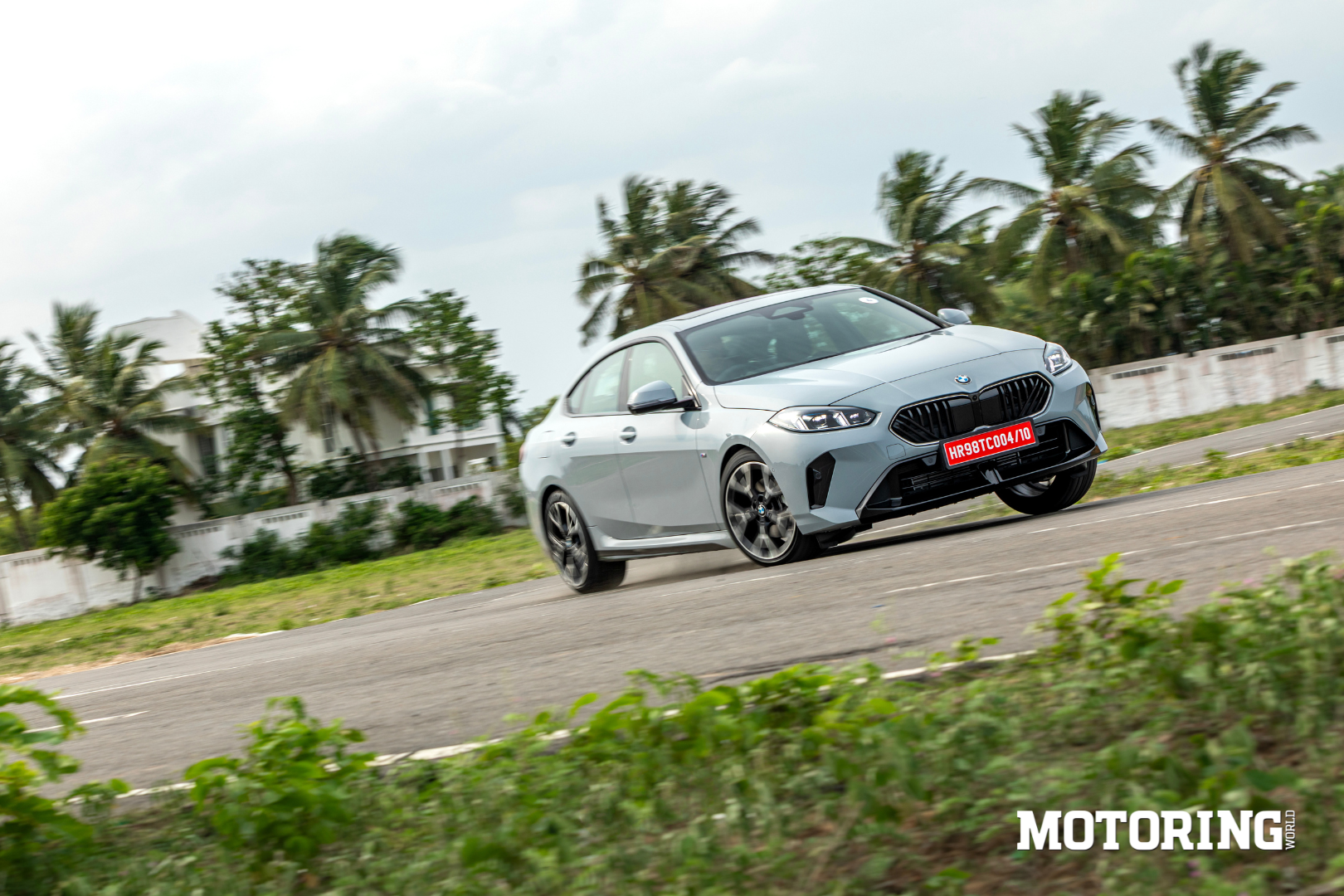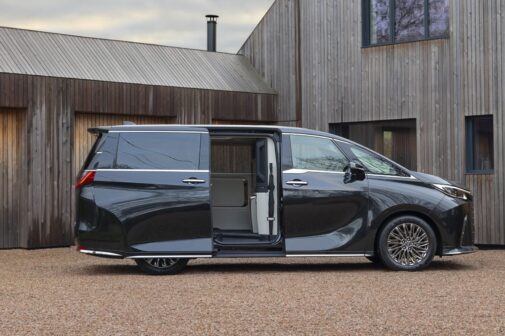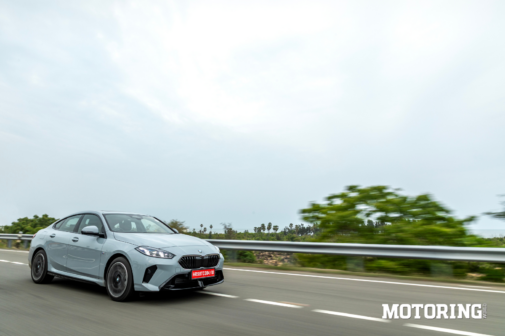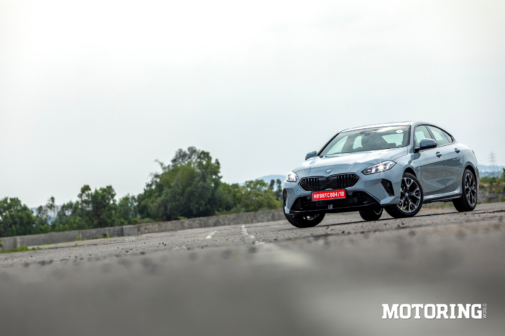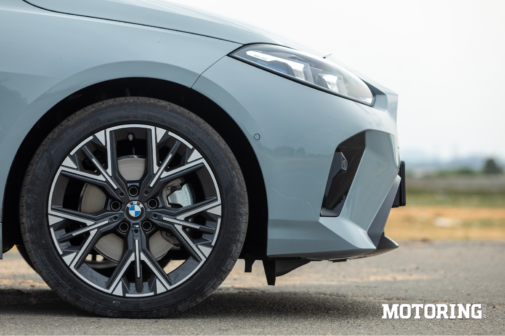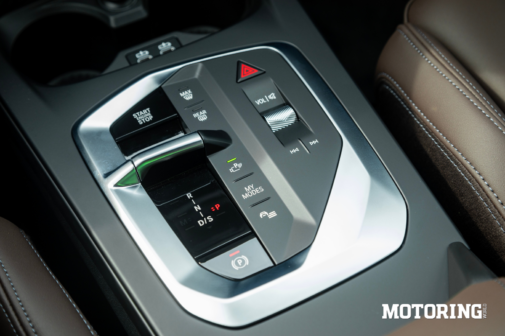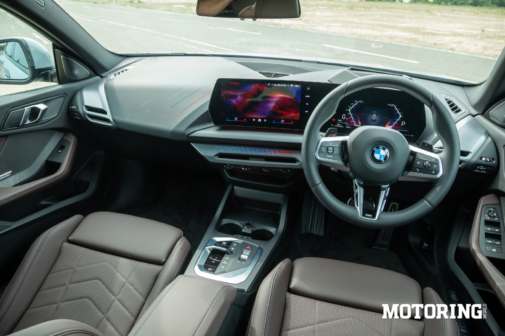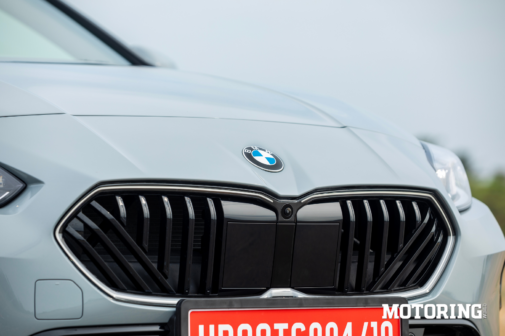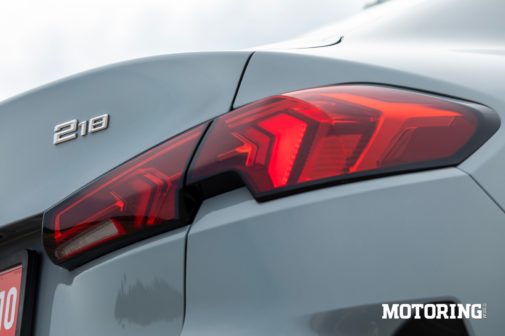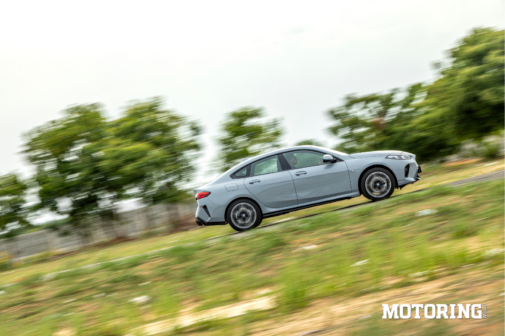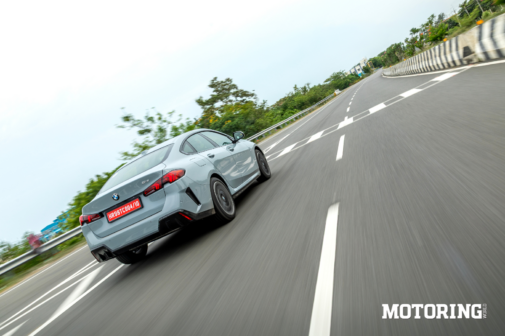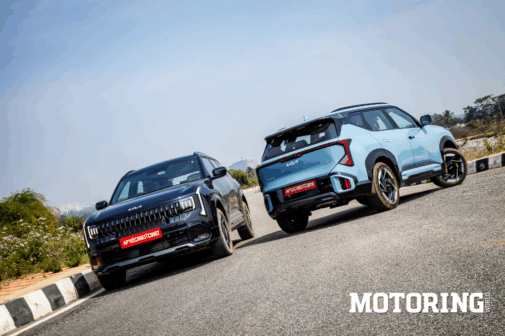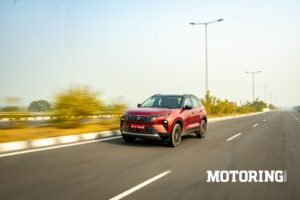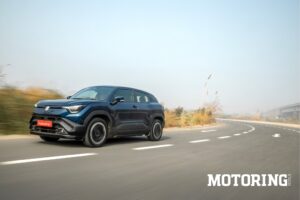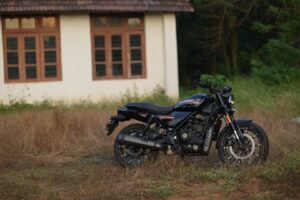I’ve always wondered what manufacturers think when they present four-door sedans as coupes; it’s almost as if the extra two doors are to be considered a state of mind. Mercedes-Benz kick-started this odd trend in the modern era with the CLS, in 2004 (I say ‘modern’ because the Rover P5 Coupe showed up in the early 1960s), and it’s stuck around ever since. Whatever you think of it, BMW’s smallest sedan comes with the coupe moniker, and positions itself as a kind of gateway drug – the stuff that will (BMW hopes) get you hooked enough to want to up the ante and start splashing out for the 3, 5 and 7 Series. It’s aimed squarely at India’s young and loaded —tech-bros who want a Bavarian badge without draining their crypto wallets, for example. At an estimated ₹45-50 lakh (ex-showroom), it’s stepping into a cage match with the Audi A4 and Mercedes-Benz A-Class (and even its SUV sibling, the X1), and I took it for a spin down Chennai’s East Coast Road to see what it offered over the older model.
The first 2 Series Gran Coupe, launched in 2020, was a bit of a mixed bag if I’m honest. I drove it in Portugal just before the pandemic deep-sixed the world, and although it was entertaining enough, the cabin felt a little low-rent, the rear seat was cramped and the front-wheel-drive setup was underwhelming if you were used to BMW’s RWD and AWD sedans. The 2025 model, codenamed F74, is a sharper effort – at least on paper – with new styling, a plusher interior, and plenty of tech and suspension upgrades. Read on to see how things stack up.
Viewed head on, the new front end (in M Sport trim) is milder, shall we say, than the older model; that car didn’t have the prettiest face, mind you, but it had a reasonably aggressive appearance which made it stand out, at the very least. BMW has decided to taper things down, perhaps in an effort to increase the car’s visual appeal for a broader audience; the result is a front end that’s more generic, and it reminds me of some Kia sedans (and even the erstwhile Renault Fluence). The blacked-out kidney grille is a new one, and thankfully it isn’t the size of a billboard. It sits between LED headlamps and above a redesigned bumper that’s nicer than the older version; the new fog lamp design is sleeker too.
The profile hasn’t changed much; the Hofmeister kinks are very much in evidence, with discreet ‘2’ logos on them, and the wheel arches look better filled out because of the bigger 18-inch wheels, shod with tubeless tyres. The rear end is the tastiest section of the car, with a menacing, high gloss rear lower apron, which gives the impression of a quad exhaust setup; the tail lights are sleeker. This car doesn’t quite match the cohesiveness of the designs of its elder siblings, but that’s not to say that it lacks presence (especially with 20mm more length and 25mm more height); what you make of that presence is, of course, subjective.
Climbing into the cabin doesn’t require you to be a contortionist, but it does need a little nip here and a tuck there if you’re used to SUVs and larger sedans. It’s a major upgrade over the older car, that’s for sure; the difference is immediately apparent. The vegan-leather seats are fantastic to sit in, but there’s a significant drawback – they’ll start to feel warm in summer, and there’s no seat ventilation on offer, which is inexplicable in a car like this; hopefully BMW will fix this shortcoming. The familiar curved dual-screen setup is present here, with an absolutely dizzying number of menus and options to dive into, if that’s your thing; it’s not mine, though – it’s really annoying to have to fiddle around on a screen for the A/C controls, and I can’t wait for the day when manufacturers go back to doing sensible things like providing buttons, dials and switches, instead of turning cars into giant smartphones; there’s no iDrive controller either, although BMW’s latest OS is smooth and snappy.
The chunky steering wheel may be too chunky for some (I love it), and in terms of features, there’s everything you could want (except for the seat cooling your posterior) – wireless smartphone connectivity, wireless charging, a HUD, ambient lighting, a sunroof, cup-holders, voice control, connected car tech and all the rest of it. The rear seat, despite the 20mm increase in overall car length, remains slightly tight for two adults; I wouldn’t put a third one back there. Still, as a premium family sedan – two adults up front, two kids in the back – it’ll do the job, and the 430-litre boot is capacious enough for a weekend trip (expect overall space to be reduced with a space-saver tyre in there, though). The plastics (most of them recycled) are better than in the previous car, and the overall impression is of a job much better done.
What you think of the 2 Series’ performance and dynamic capabilities depends on the expectations you show up with. Compare it to a 3 Series and you may as well go home; think of it specifically as a front-driven BMW, with its own character, and you’ll probably stay for the end credits. The engine doesn’t sound like much on paper – a 3-cylinder 1.5-litre turbocharged petrol unit that also shows up in the X1 and some Minis, as opposed to the older car’s 2-litre 4-pot turbo petrol – and the power and torque figures are down as well; 154 bhp and 23.4 kgm of torque, against 176 bhp and 28 kgm.
Like most such engines, there’s a certain gruffness to it, but BMW has ensured that NVH levels are top notch, so it’s not an annoyance. Arguably it has all the performance you need for Indian conditions, with a 0-100 kph time of 8.6 seconds and a linear nature while accelerating; if you’re in a tearing hurry, however, there’s more engine note than forward movement for a brief while. The dual-clutch 7-speed automatic gearbox is precise, thankfully, but not razor-like; it’s better to use the paddles for the boy-racer stuff. The engine-gearbox combo lets you potter around at city speeds without a hitch, and there’s a sport boost mode (floor it, pull back the left paddle shifter and hold it) for an extra kick in the pants. As you push the car, you know that the BMW performance DNA is in there somewhere, but you never fully find it; instead, what you get is ease of use and comfort.
Which is a perfectly acceptable middle ground, though. Not all BMW owners want to go 11/10ths all the time, and this car is great for them; the driving position is excellent, the seat grips you just so and the reworked suspension (anti-roll bar mounts, more caster on the front wheels, brace struts on the rear axle) along with larger tyres and a more grippy braking setup all combine to present a confident, easily controllable car. The front-wheel-drive chassis feels agile, and the front end stays planted. The steering wheel could have done with more feedback (for a BMW), but it engages in a conversation with you nonetheless. The suspension absorbs bumps well, maintaining its composure in corners, and the tyres provide strong grip on dry tarmac. The ride on offer is reasonably plush on smooth roads, with only the largest ruts sending small thuds into the cabin.
The 2 Series Gran Coupe is a curious beast — part premium sedan, part cheeky upstart, trying to carve a niche in India’s cut-throat luxury market. Its design says ‘BMW’ but it doesn’t quite turn heads; the cabin is tech-heavy and premium, but a bit cramped and missing seat ventilation; it drives in a lively enough manner, but won’t make your hair stand on end. For its estimated Rs Rs 45-50 lakh sticker price (ex-showroom), there’s a variety of roomier options, notably its stablemate, the iX1 LWB; cars like the Audi Q3 and the Hyundai Ioniq 5 will also vie for your attention. If it absolutely has to be a BMW sedan, though, and one that won’t break the bank, then the 2 Series Gran Coupe is a very fine automobile; what it’s not is ‘the ultimate driving machine’, for which you’ll have to go higher up the ladder.
AUTODATA
BMW 2 SERIES GRAN COUPEPOWERTRAIN
Displacement:
Max Power:
Max Torque:
Transmission:
1493 cc, 3-cylinders inline
153 bhp @ 4900 - 6000 rpm
23.45 kgm 1500 - 4600 rpm
7AT
TYRES
F/R: 225/45 R18
DIMENSIONS
L/W/H (mm):
Wheelbase:
Kerb Weight:
Fuel Capacity:
4546/1800/1445
2670 mm
1,570 kg
50 litres
PRICE
TBA





